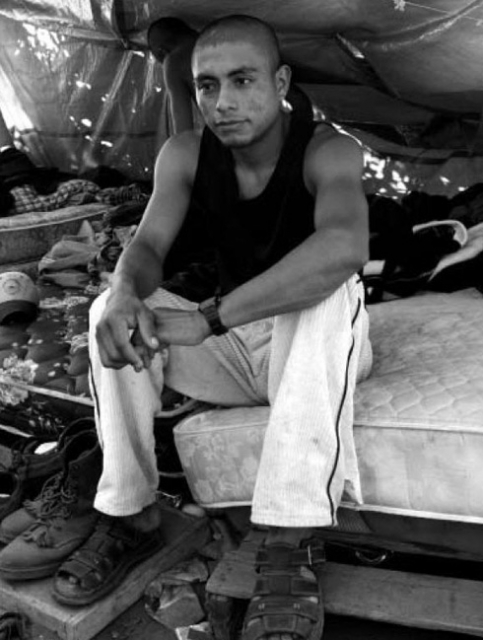From the Open-Publishing Calendar
From the Open-Publishing Newswire
Indybay Feature
"Living Under the Trees"
A photoessay by David Bacon, From Contexts, journal of the American Sociological Association
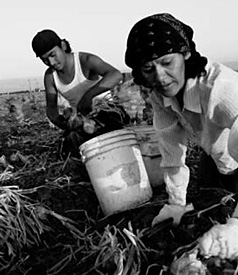
At sunset, at the southern-most end of the San Joaquin Valley, a crew of indigenous workers cut the tops and roots off bunches of onions. (Photo: David Bacon)
About 30 million Mexicans survive on less than 30 pesos per day - not quite $3. The minimum wage is 45 pesos per day. The Mexican federal government estimates that 37.7 percent of its 106 million citizens - 40 million people - live in poverty. Some 25 million, or 23.6 percent, live in extreme poverty. In rural Mexico, more than 10 million people have a daily income of less than 12 pesos - a little more than one American dollar.
It's no accident the state of Oaxaca is one of the main starting points for the current stream of Mexican migrants coming to the United States. Extreme poverty encompasses 75 percent of its 3.4 million residents, according to EDUCA, a Mexican education and development organization. Thousands of indigenous people leave Oaxaca's hillside villages for the United States every year, not only for economic reasons but also because a repressive political system thwarts the kind of economic development that could lift incomes in the poorest rural areas. Lack of development pushes people off the land. The majority of Oaxacans are indigenous people - that is, they belong to communities and ethnic groups that existed long before Columbus landed in the Caribbean. They speak 23 different languages.
"Migration is a necessity, not a choice," explained Romualdo Juan Gutierrez Cortez, a teacher in Santiago Juxtlahuaca, in Oaxaca's rural Mixteca region. "It is disheartening to see a student go through many hardships to get an education here in Mexico and become a professional, and then later in the United States do manual labor. Sometimes those with an education are working side-by-side with others who do not even know how to read."
In California, migrants have become the majority of people working in the fields. Settlements of Triquis, Mixtecs, Chatinos and other indigenous groups are dispersed in a Oaxacan diaspora. This movement of people has created larger transnational communities, bound together by shared culture and language, and the social organizations people bring with them from place to place.
"Living Under the Trees" is a project that documents the experiences and conditions of indigenous farm worker communities. It focuses on social movements in indigenous communities and how indigenous culture helps communities survive and enjoy life. The project's purpose is to win public support for policies to help those communities by putting a human face on conditions and providing a forum in which people speak for themselves. It is a joint effort of California Rural Legal Assistance, its Indigenous Farm Worker Project, and the Indigenous Front of Binational Organizations. An exhibition of photographs and oral history panels from this project has been touring throughout California for two years.
These particular photographs highlight the relationship between community residents and their surroundings, as well as their relations with each other. They show situations of extreme poverty, but are also intended to depict people who are capable of changing conditions by organizing themselves and creating social change.
"Living Under the Trees."
http://dbacon.igc.org/Imgrants/imgr00c.html
---------
David Bacon is a documentary photographer and journalist. He is the author of "Illegal People: How Globalization Creates Migration and Criminalizes Immigrants." All photos and text are © David Bacon.
http://www.truthout.org/122508Y
About 30 million Mexicans survive on less than 30 pesos per day - not quite $3. The minimum wage is 45 pesos per day. The Mexican federal government estimates that 37.7 percent of its 106 million citizens - 40 million people - live in poverty. Some 25 million, or 23.6 percent, live in extreme poverty. In rural Mexico, more than 10 million people have a daily income of less than 12 pesos - a little more than one American dollar.
It's no accident the state of Oaxaca is one of the main starting points for the current stream of Mexican migrants coming to the United States. Extreme poverty encompasses 75 percent of its 3.4 million residents, according to EDUCA, a Mexican education and development organization. Thousands of indigenous people leave Oaxaca's hillside villages for the United States every year, not only for economic reasons but also because a repressive political system thwarts the kind of economic development that could lift incomes in the poorest rural areas. Lack of development pushes people off the land. The majority of Oaxacans are indigenous people - that is, they belong to communities and ethnic groups that existed long before Columbus landed in the Caribbean. They speak 23 different languages.
"Migration is a necessity, not a choice," explained Romualdo Juan Gutierrez Cortez, a teacher in Santiago Juxtlahuaca, in Oaxaca's rural Mixteca region. "It is disheartening to see a student go through many hardships to get an education here in Mexico and become a professional, and then later in the United States do manual labor. Sometimes those with an education are working side-by-side with others who do not even know how to read."
In California, migrants have become the majority of people working in the fields. Settlements of Triquis, Mixtecs, Chatinos and other indigenous groups are dispersed in a Oaxacan diaspora. This movement of people has created larger transnational communities, bound together by shared culture and language, and the social organizations people bring with them from place to place.
"Living Under the Trees" is a project that documents the experiences and conditions of indigenous farm worker communities. It focuses on social movements in indigenous communities and how indigenous culture helps communities survive and enjoy life. The project's purpose is to win public support for policies to help those communities by putting a human face on conditions and providing a forum in which people speak for themselves. It is a joint effort of California Rural Legal Assistance, its Indigenous Farm Worker Project, and the Indigenous Front of Binational Organizations. An exhibition of photographs and oral history panels from this project has been touring throughout California for two years.
These particular photographs highlight the relationship between community residents and their surroundings, as well as their relations with each other. They show situations of extreme poverty, but are also intended to depict people who are capable of changing conditions by organizing themselves and creating social change.
"Living Under the Trees."
http://dbacon.igc.org/Imgrants/imgr00c.html
---------
David Bacon is a documentary photographer and journalist. He is the author of "Illegal People: How Globalization Creates Migration and Criminalizes Immigrants." All photos and text are © David Bacon.
http://www.truthout.org/122508Y
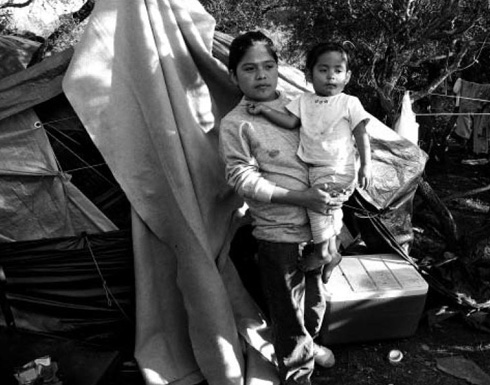
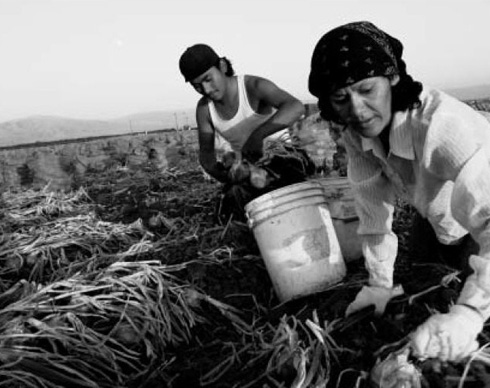
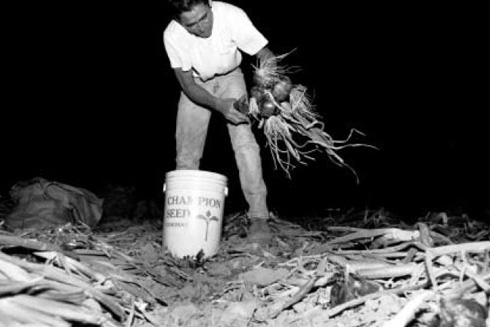
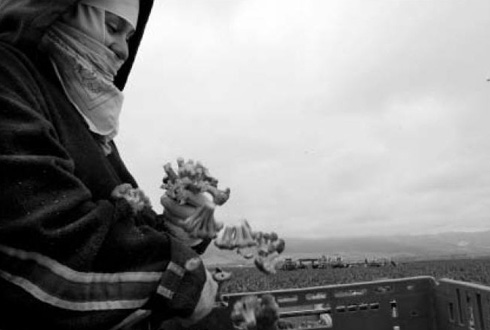
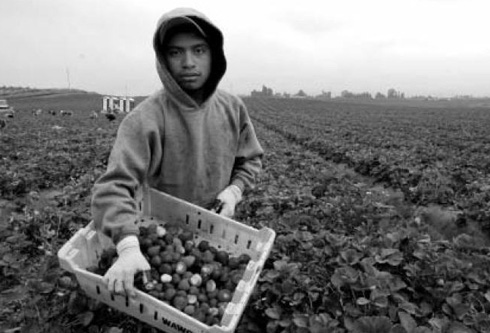
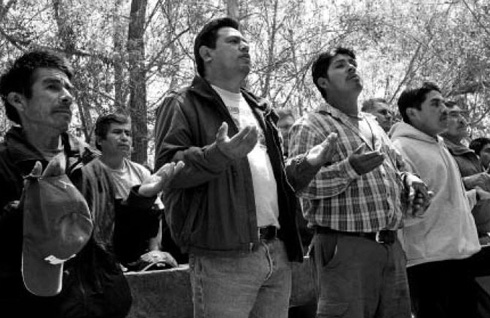
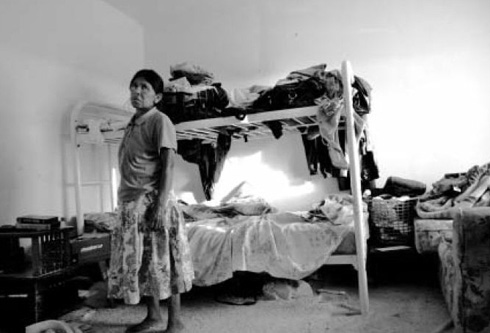

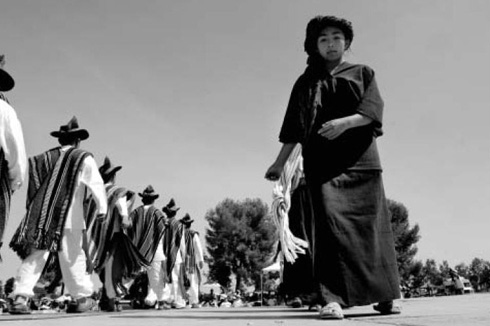
Add Your Comments
Comments
(Hide Comments)
For years I have found illegal labor practices in the Coachella Valley by luxury home builders and agricultural companies. It is detestable the way these companies cheat the laborers out of their legal wages. A home builders' bookkeeper and their manager told they did not have to abide by California's labor code because the owners were based out of Arizona. A date company told me that they could change workers time cards to eliminate overtime because the (mega) ag company they work with told them it was OK due to the (unfair) loophole that allows them to not pay overtime for field workers under some circumstances. They interpreted this loophole to mean they could withhold overtime for all their employees.
Needless to say, I have been 'let go' from these positions as soon as I brought up their illegal labor practices. A very pregnant date sorter came to me during my ten days at this company to find out how much time she could take off for her new baby. She was told she could have two weeks and if she took more she would be fired.
I've reported these companies to the Labor Board, apparently without satisfactory action being taken. If we could just crack down on this type of illegal practice it would go a long way in helping the situation.
Needless to say, I have been 'let go' from these positions as soon as I brought up their illegal labor practices. A very pregnant date sorter came to me during my ten days at this company to find out how much time she could take off for her new baby. She was told she could have two weeks and if she took more she would be fired.
I've reported these companies to the Labor Board, apparently without satisfactory action being taken. If we could just crack down on this type of illegal practice it would go a long way in helping the situation.
The Zapotec people come from the central highlands of Mexico, not from Oaxaca. In my youth, I used to fly up to the villages to help provide medical care on a weekly basis. While their poverty was equivalent to that of the indigenous people of Oaxaca, their terrain and customs were not.
We are 100% volunteer and depend on your participation to sustain our efforts!
Get Involved
If you'd like to help with maintaining or developing the website, contact us.
Publish
Publish your stories and upcoming events on Indybay.
Topics
More
Search Indybay's Archives
Advanced Search
►
▼
IMC Network


